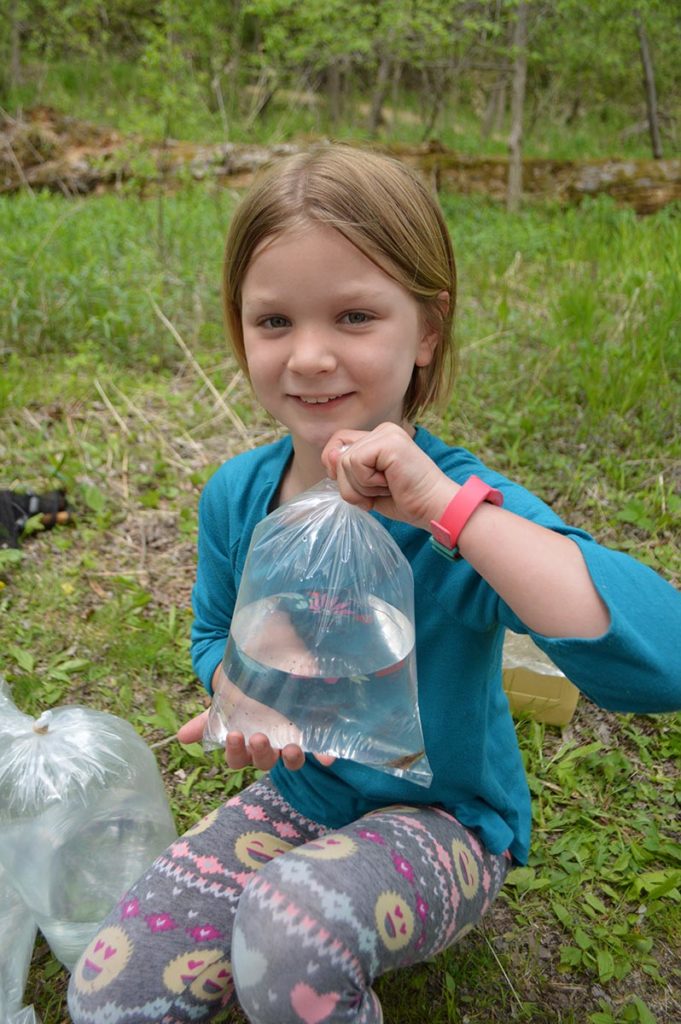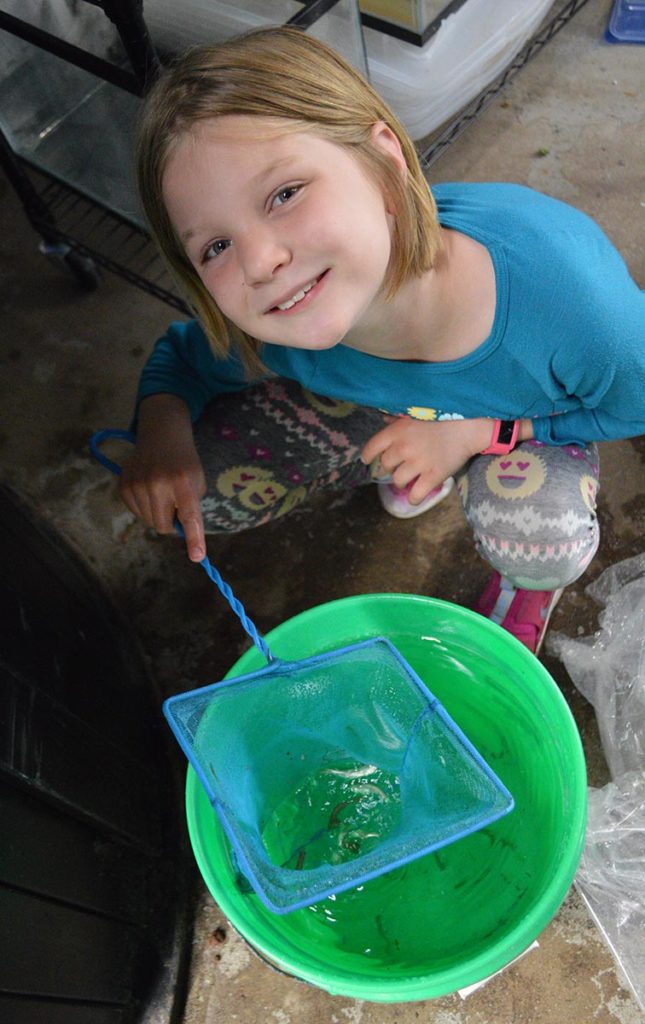
“We’re going on a darter hunt.
We’re gonna catch some gorgeous ones.
What a beautiful day!
We’re not scared.”
–inspired by a book I used to read to my children at bedtime…
It’s impossible to write a story lately without reflecting upon the impact of the COVID-19 pandemic. With the rollout of vaccinations, the dropping of mask mandates for fully-vaccinated individuals, and an overall sense that we may finally be able to “return to normal” here in Minnesota, aquarists like myself are eager to get back to the social side of our hobby. In-person events and meetings may have been taken for granted in the recent pre-pandemic past, but hopefully, we’ll see the return of in-person gatherings met with enthusiasm, rather than trepidation.
May 15th, 2021, was the first time I’ve gathered in-person with any aquarists since February of 2020. It also represents the first time since 2016 that I’ve been able to particulate in an amazing annual tradition that’s part of the aquarium-hobby culture here in the North Star State, the Minnesota Aquarium Society’s Darter Hunts.
What’s a Darter?
For those who aren’t already familiar, darters are a subfamily of bottom-dwelling fishes in the perch family (specifically Etheosomatidae). As a frame of reference, darters are reminiscent of gobies and blennies. They are generally small and males of some species are often colorful; some species can be easily recommended for aquarium keeping, provided their basic husbandry requirements are met. Given their interesting behavior and potential for color, it’s no surprise that aquarists might be interested in keeping them in their fish tanks. But it’s not as though you can simply walk into your local fish store to buy some darters. Darters are usually a DIY acquisition project for most native fish enthusiasts, although some species can be ordered and shipped from specialty native fish dealers.
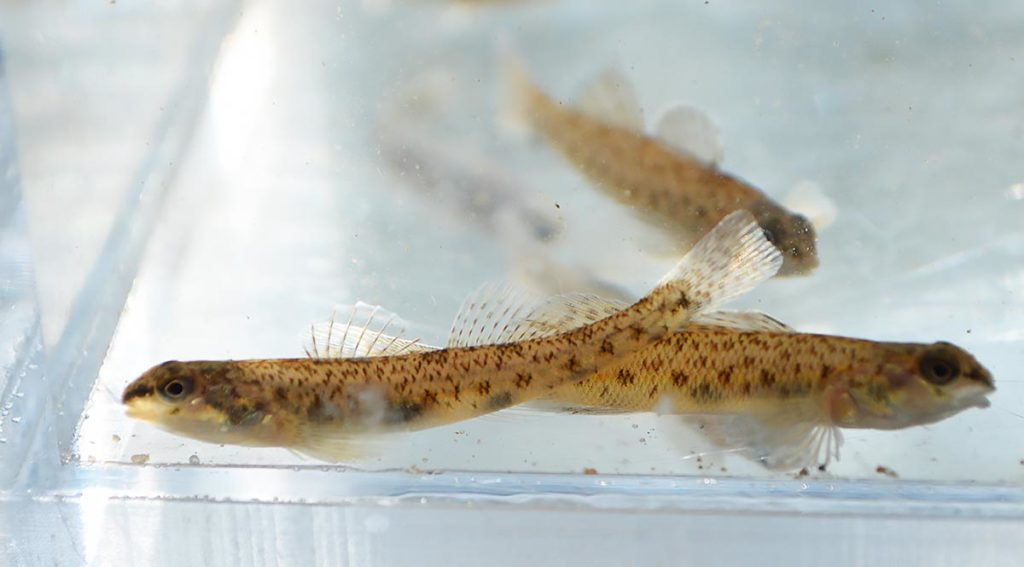
Native Fish Keeping: A Bit Complex From A Legal Standpoint
For nearly 30 years, Jenny Kruckenberg and the Minnesota Aquarium Society (MAS) have organized a unique event available to aquarists from around the state, a series of two or three half-day spring fishing expeditions where aquarists join in the search for elusive and delightful North American native fishes suitable for aquarium keeping. These fishing events are operated under special permits granted by the Minnesota Department of Natural Resources (MN DNR) allowing the limited fishing for and harvest of darters, which otherwise fall into a bit of a gray area within the state’s fishing regulations. Kruckenberg, who is also the Minnesota Regional Outreach Representative for the North American Native Fishes Association (NANFA), handles the permitting process with the state, and carefully records the harvest and reports the data back to the DNR each year. Safety and liability waivers are important parts of this club-sanctioned event as well.

It is important to discuss that fishing regulations and laws governing the private aquarium keeping of native fishes vary greatly between each state. In some states, darter species are lumped into the loose category of minnows or baitfish and are regulated under those guidelines, but in Minnesota, darters are not part of that category…in fact, they fall into none of the regular fishery categories (they’re not game fish, they’re not rough fish, and they’re not baitfish).
While certain darter species are explicitly prohibited from harvest in Minnesota due to conservation concerns, the others are not explicitly permitted either, hence the need for collection permits to harvest darters. While darters are obviously the “highlight” of these fishing trips, many of the other Minnesota fishes that were targeted and hoped for fall under the “bait” provisions of Minnesota’s fishing regulations, and thus, one could fish for them and harvest them here in Minnesota without having to participate in this limited, state-sanctioned event. Of course, the transportation of live native fishes is also a highly regulated activity in many states, including Minnesota. If there is any doubt or uncertainty, it’s best to talk to the DNR and figure it all out ahead of time!
Minnesota is certainly not the only state with somewhat difficult-to-understand fishing regulations. Some darter species around the United States are at-risk, imperiled, or even endangered and threatened with extinction. Thus, fishing for darters may require specific permits while also demanding a keen ability to differentiate between a common species and one that is protected. So to repeat the advice, don’t just go out and harvest local fishes for your home aquarium. Instead, reach out to the appropriate governmental agency and get the information and permits you need; be a responsible aquarist. Know that once the fish is removed from the environment, there is probably not a state in the nation that would let you freely release it back into the wild later on as this constitutes “stocking”, which is always heavily regulated. The regulations that govern the harvest and keeping of native fishes in the United States can be difficult to follow, but area NANFA members and native fish enthusiasts may be able to help.
Fishing Expeditions on a Budget!
But getting back to the entire concept of a “darter hunt”, one thing is clear to me; this is your opportunity to have a real-world fish collecting expedition on a budget! AMAZONAS Magazine routinely publishes stories from devoted aquarists who travel the world in the quest to find and collect special fishes in their native habitats. Such expeditions require extensive planning, and often incur great costs. While they might represent a dream trip, they may also be out of reach for most of us. I can tell you now that if I suggested to my wife that we make our next family vacation a trip to Peru to go fish collecting for Rio Nanay Angelfish, it wouldn’t go over well. However, taking a day and driving a few hours each way to collect fishes here in Minnesota didn’t even require spousal approval; I just had to make sure it didn’t conflict with the family schedule!
And schedules do come into play, as darter hunts can be subject to the weather. Rainfall can swell streams and render collection impossible. Thus, darter hunts are nearly always “tentatively scheduled” and you might not know for sure if it’s going to happen until 24 hours beforehand. So despite residing in Minnesota for 11 years, May 15th, 2021 was only the second darter hunt I was able to participate in, as oftentimes weather would cancel a trip I could make, or family obligations prevented me from participating when a trip went ahead as planned.
On my first darter hunt, my son Ethan joined me. This time around, it was my 8-year-old daughter, Audrey, who put up with the long car ride and leaky waders to have a bit of fun outdoors. The night before the trip, I gathered up the DNR’s information on the lake we were heading to and showed Audrey all the species of fishes we might encounter. We discussed how to tell them apart, and she instantly latched on to certain species she thought we should bring home for our aquariums. So we set off with a plan in hand.
I’m not going to ramble much more about this recent excursion, but instead, I’ll let the pictures and captions tell the story.
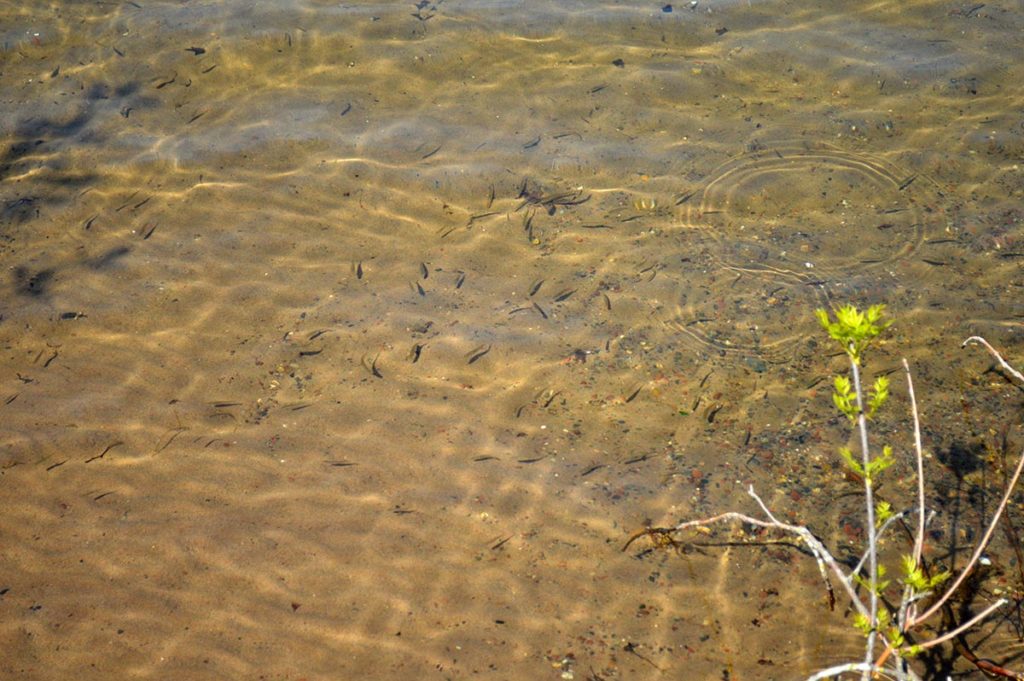
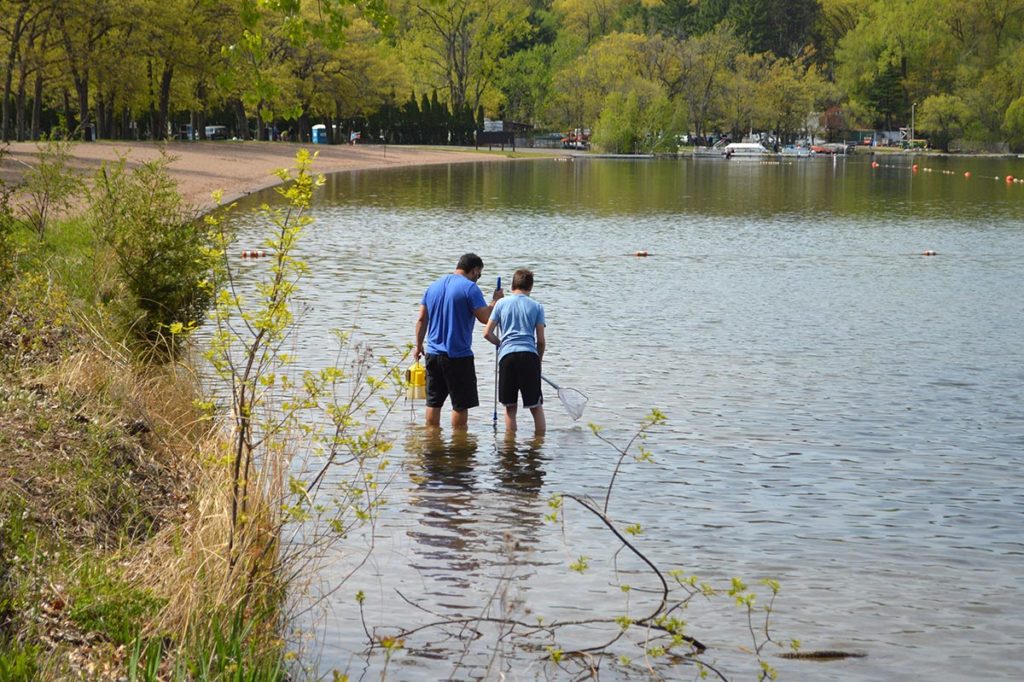
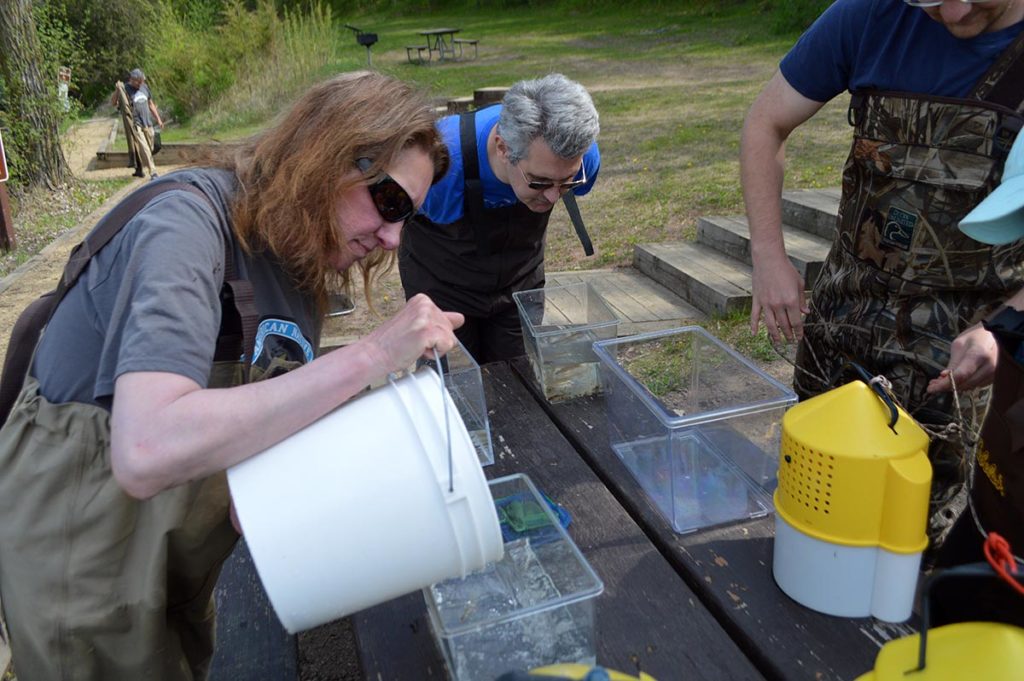
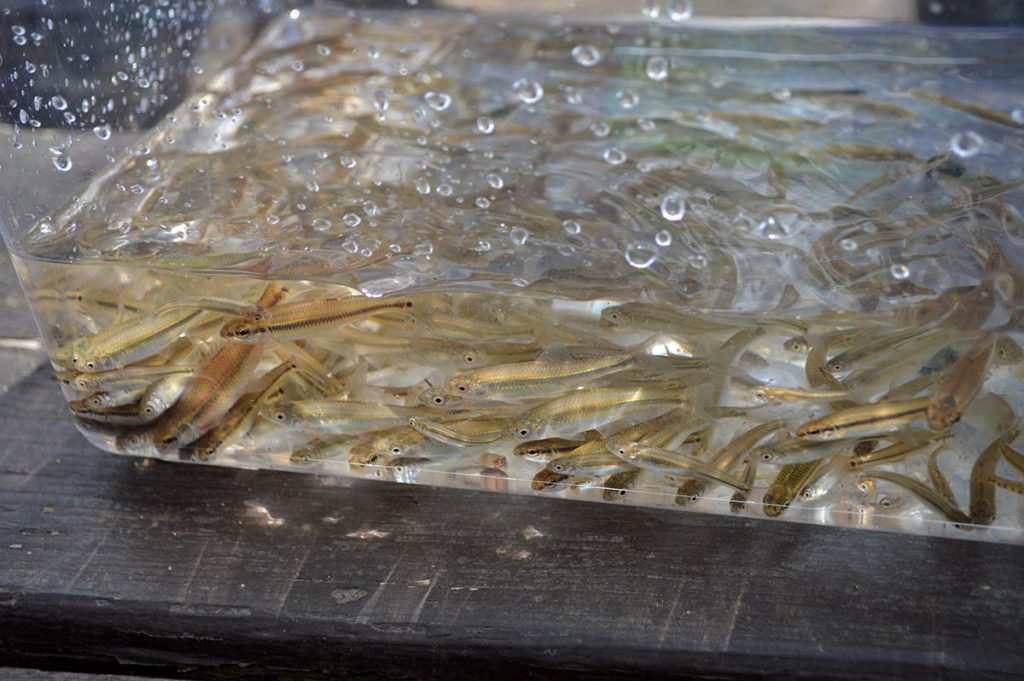
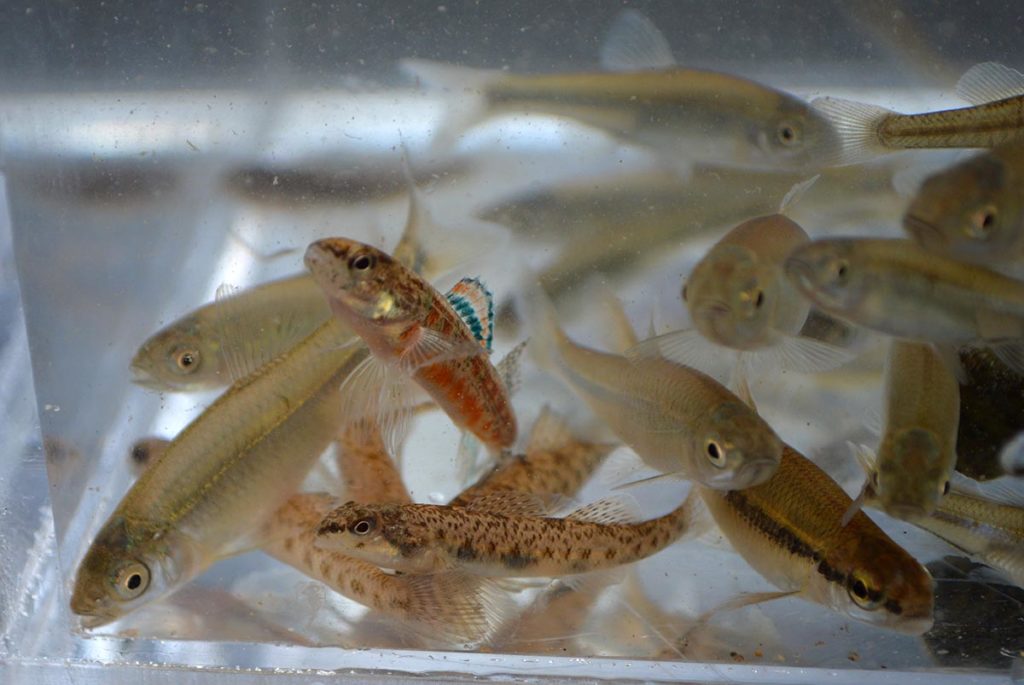
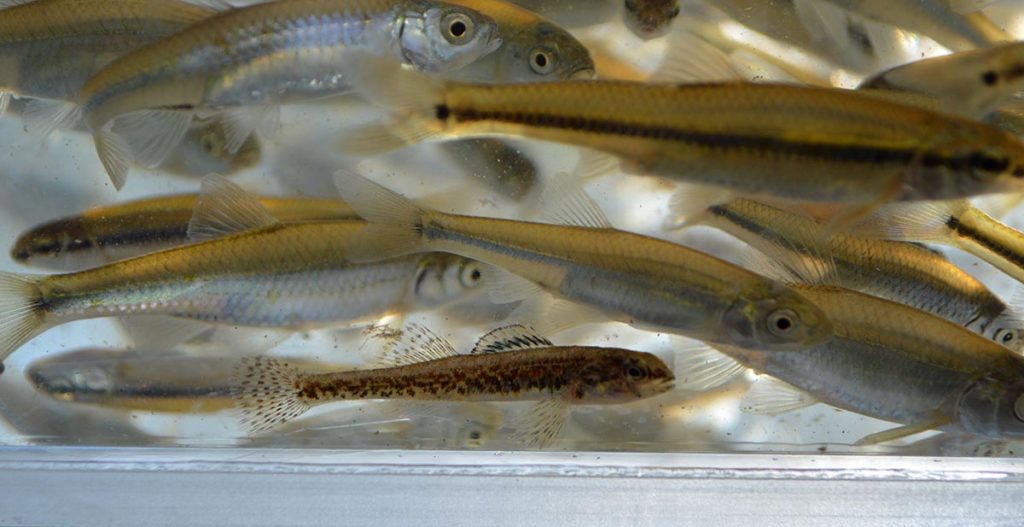
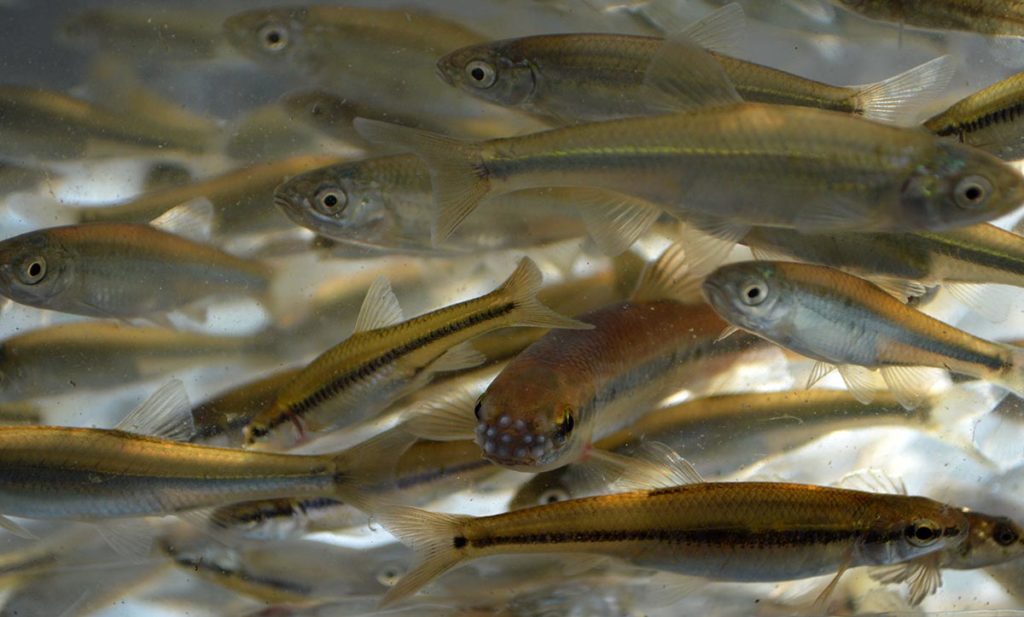
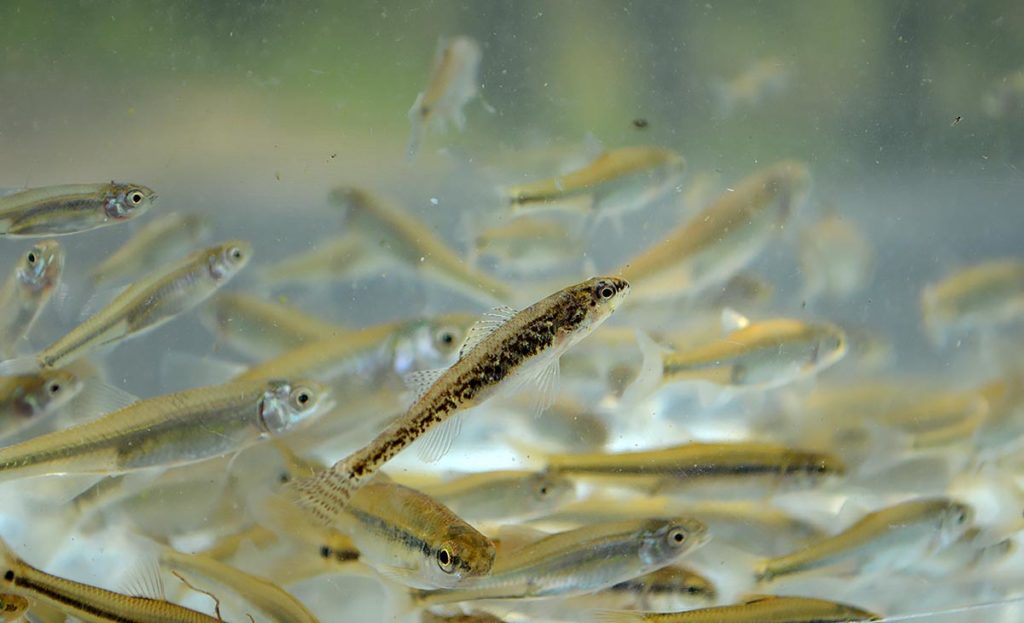
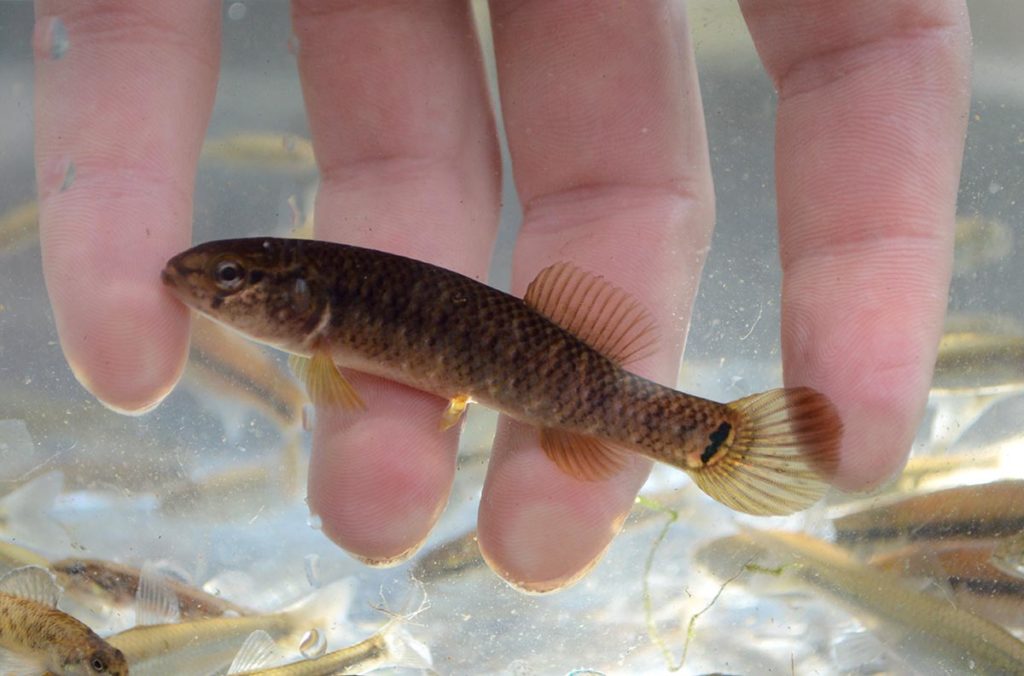
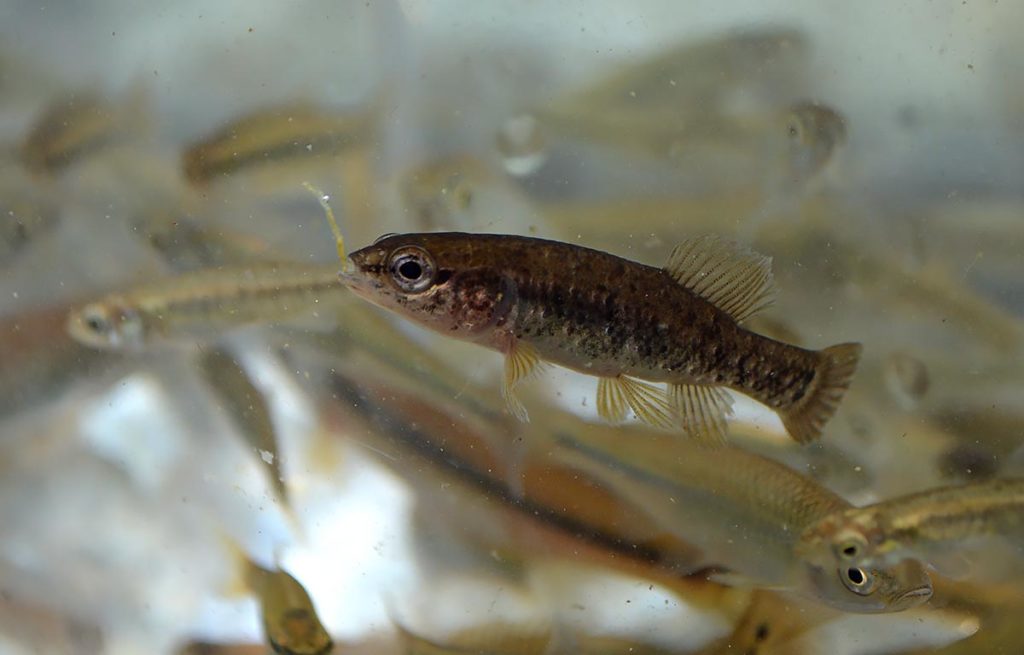
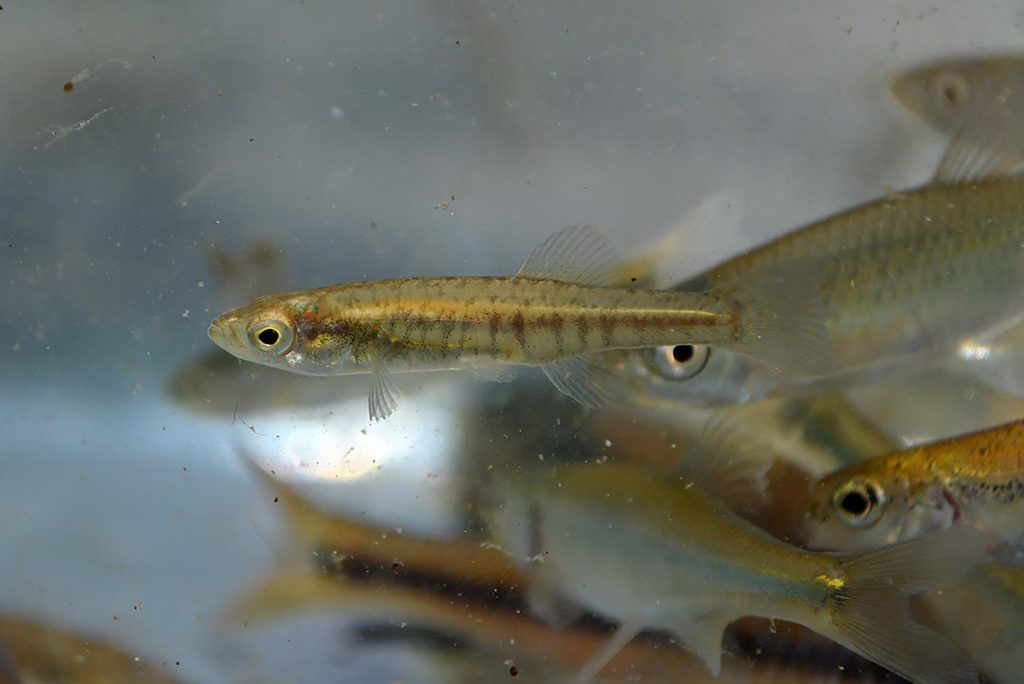
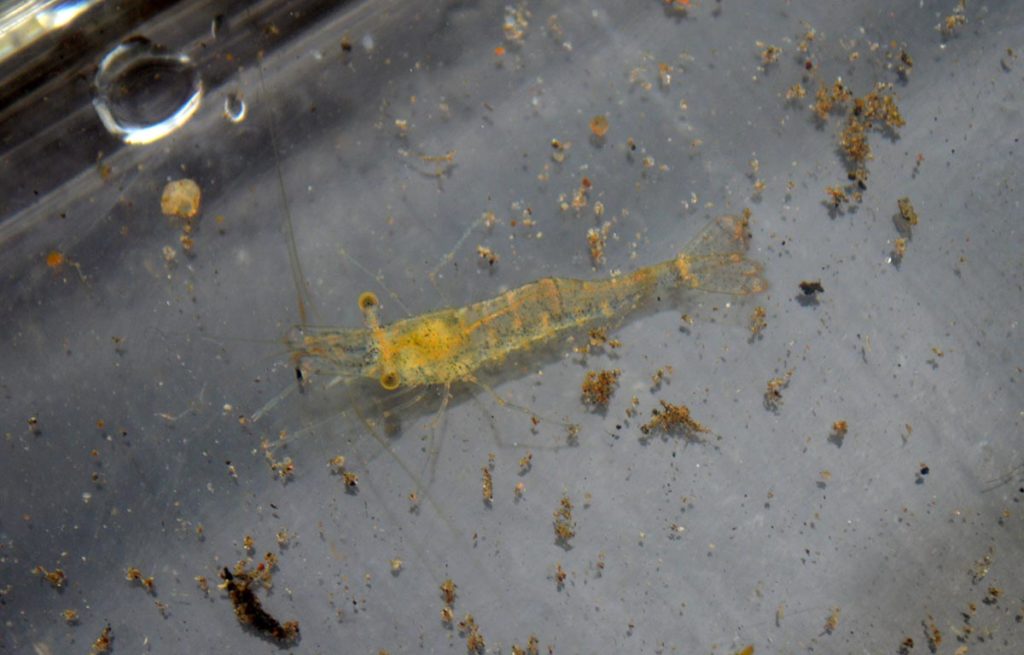
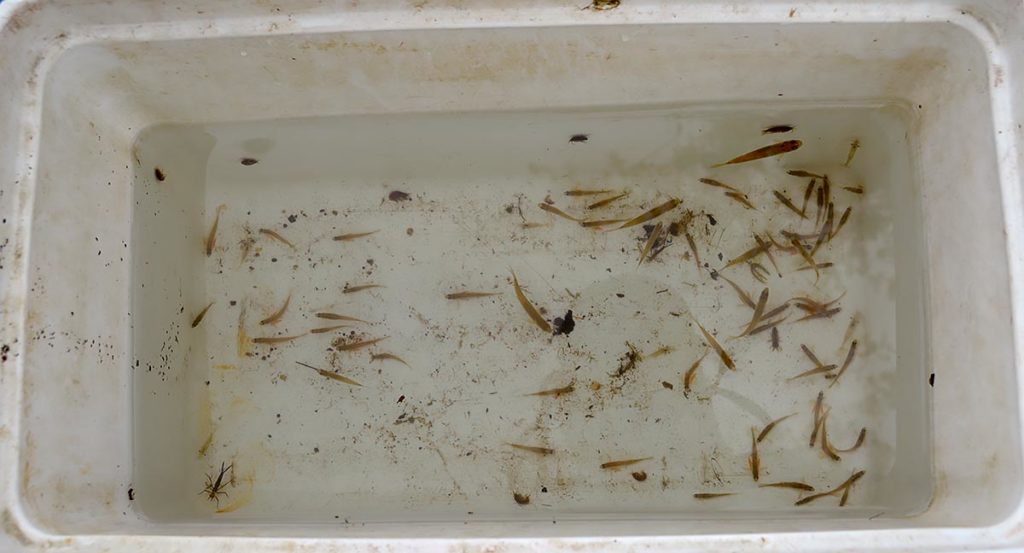
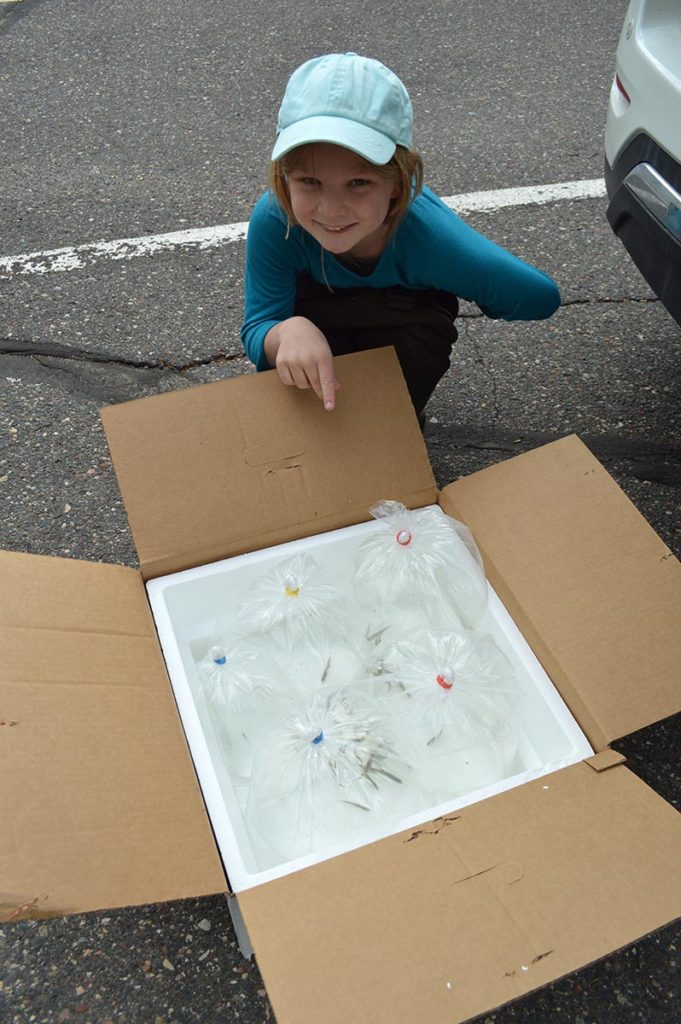
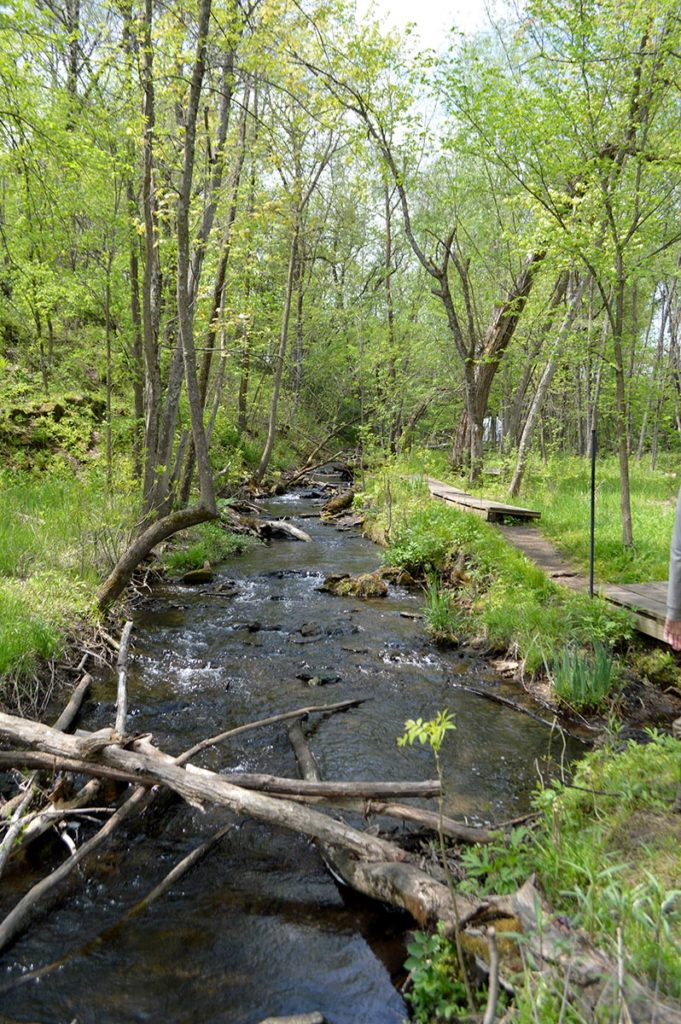
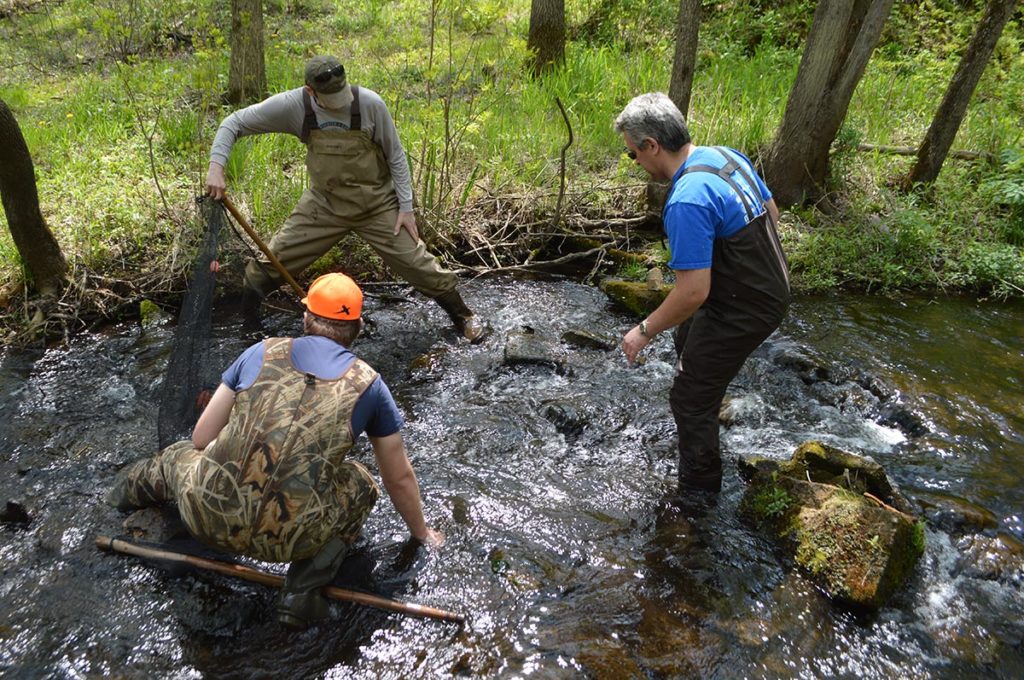
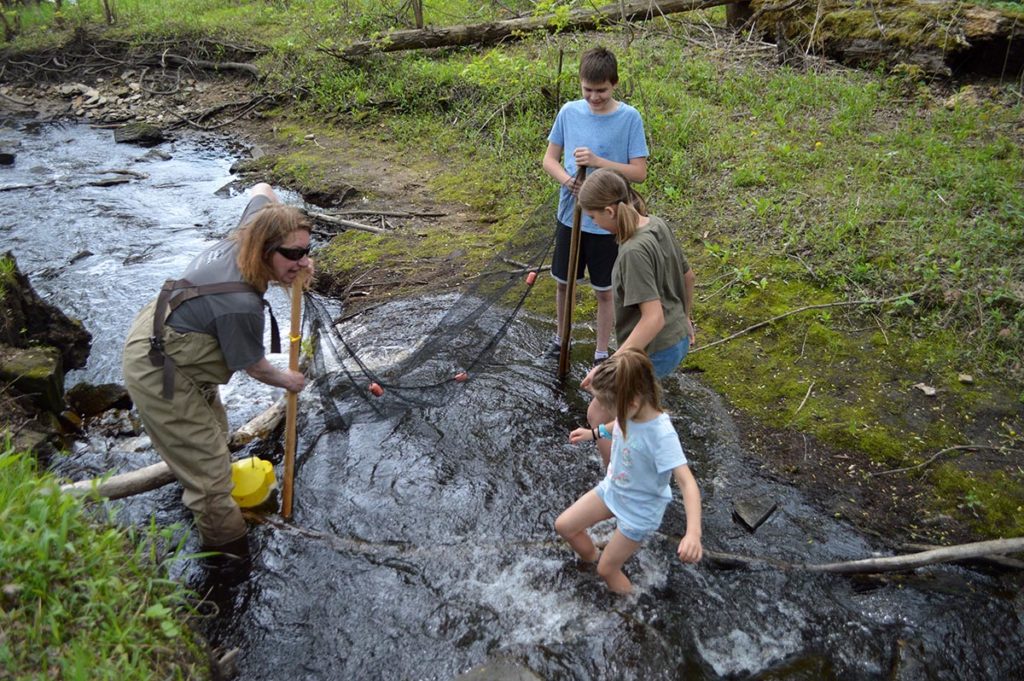

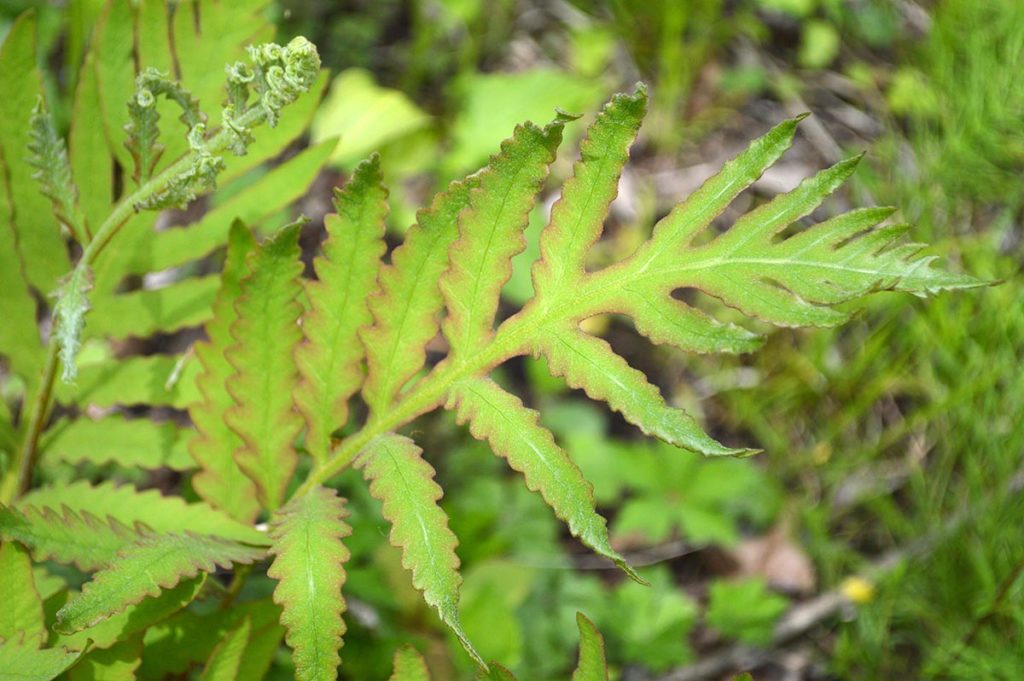
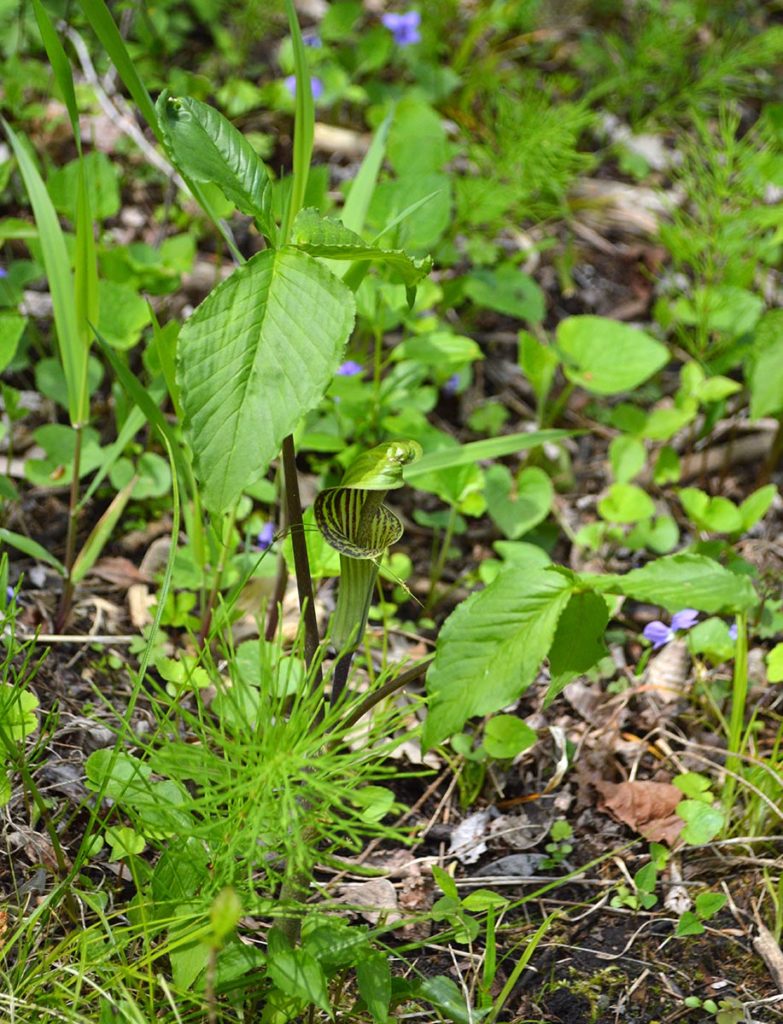
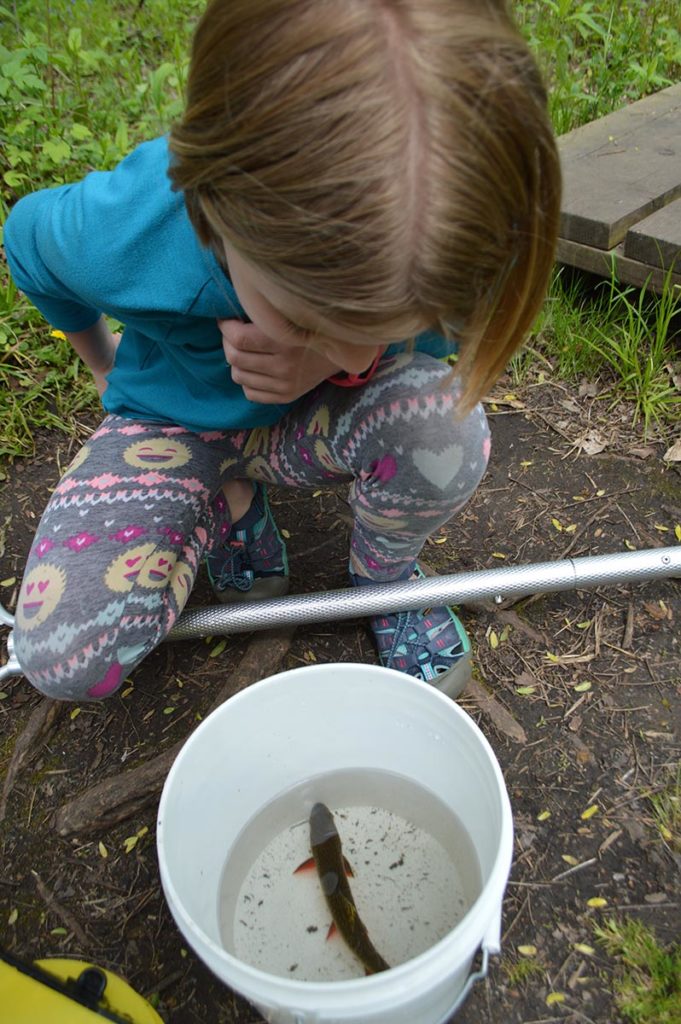
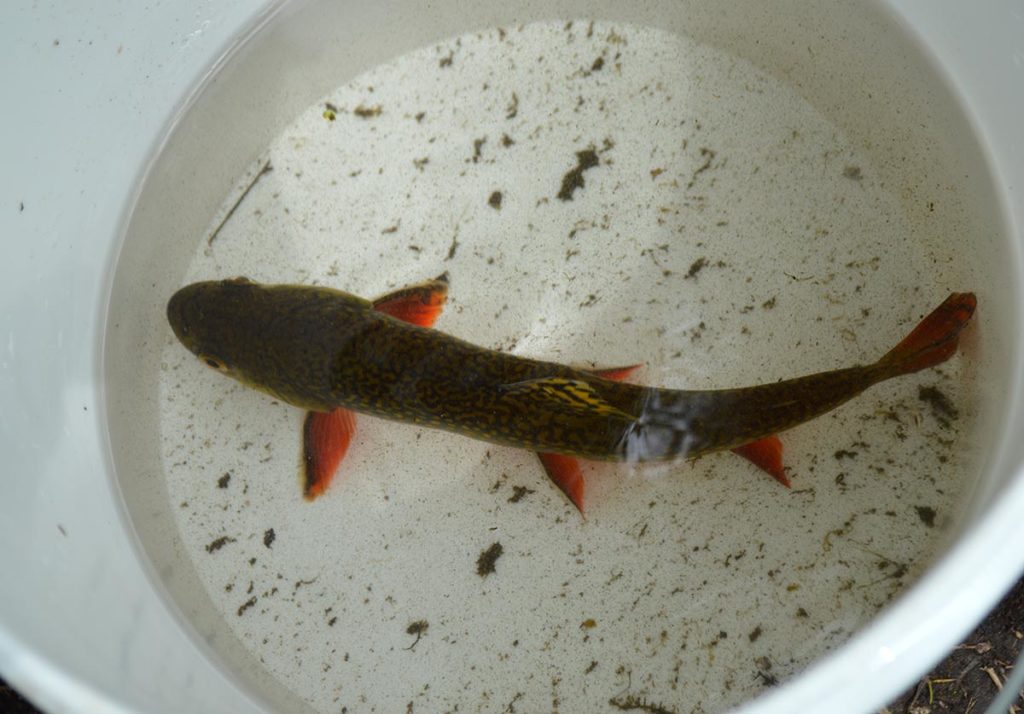
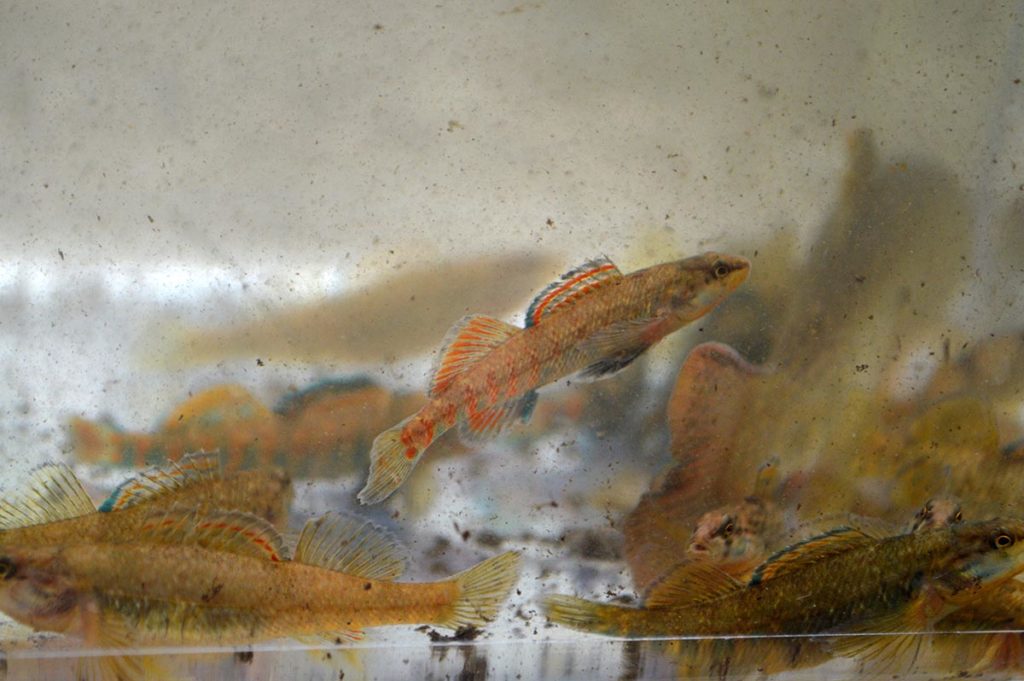
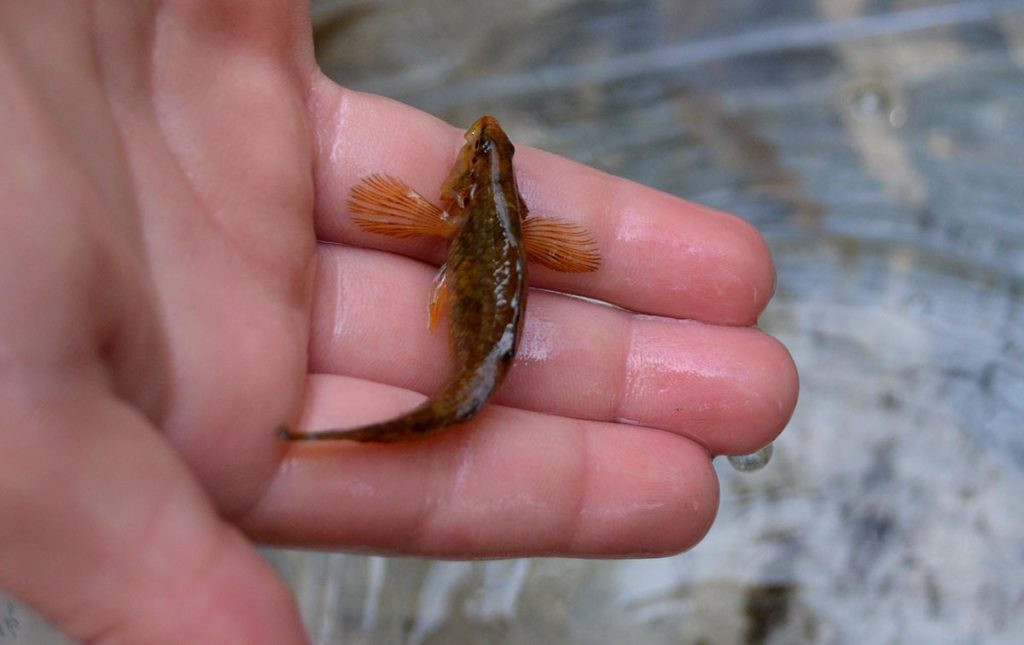
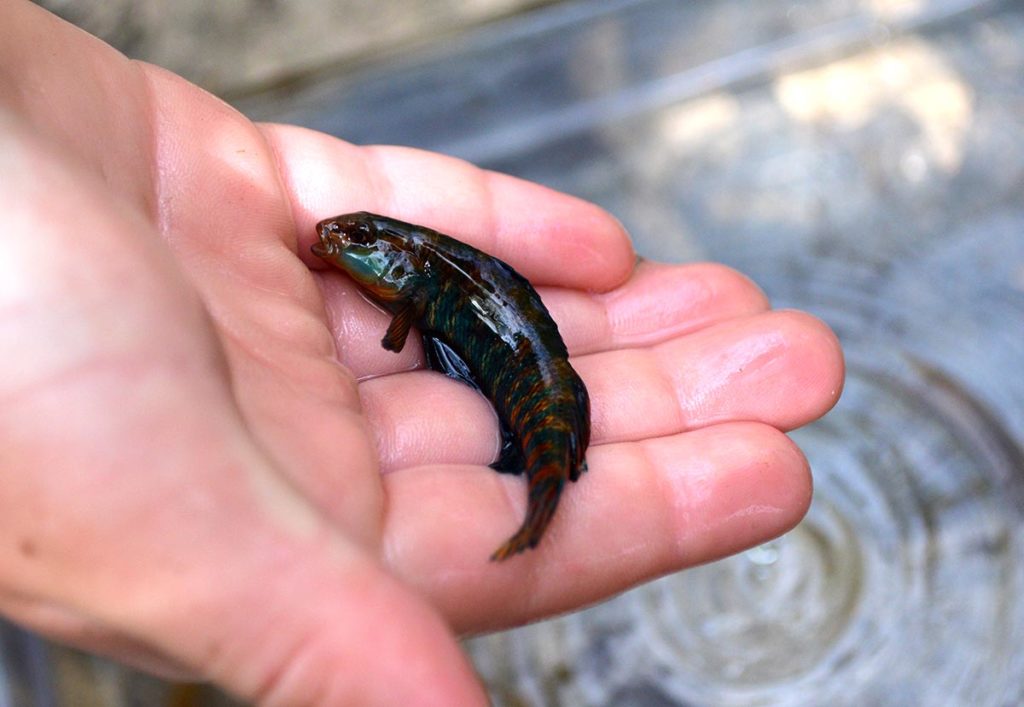
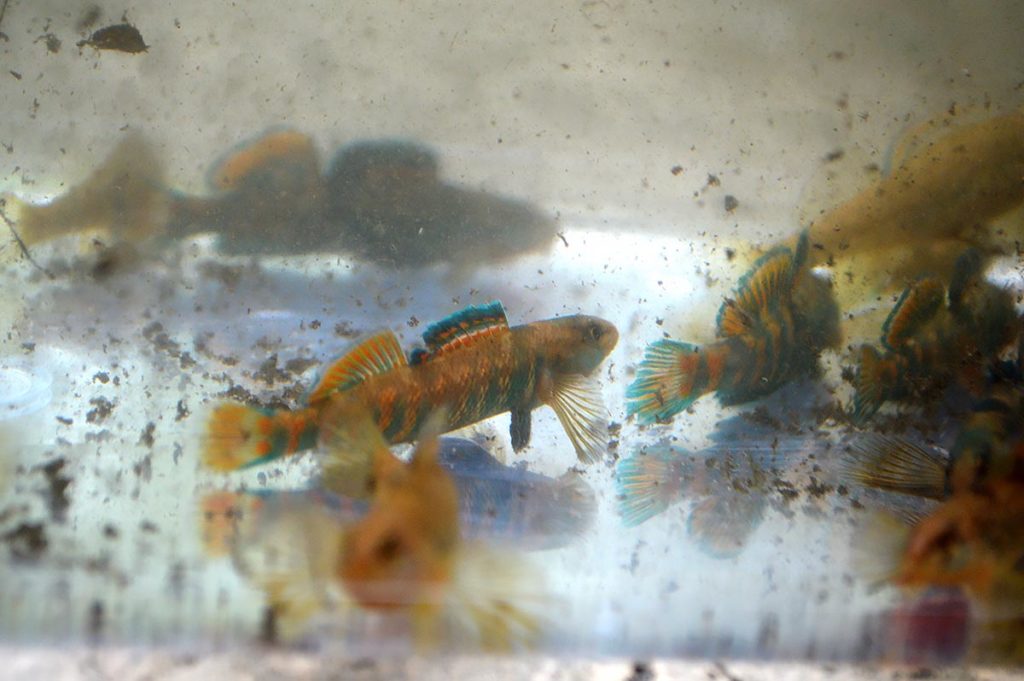
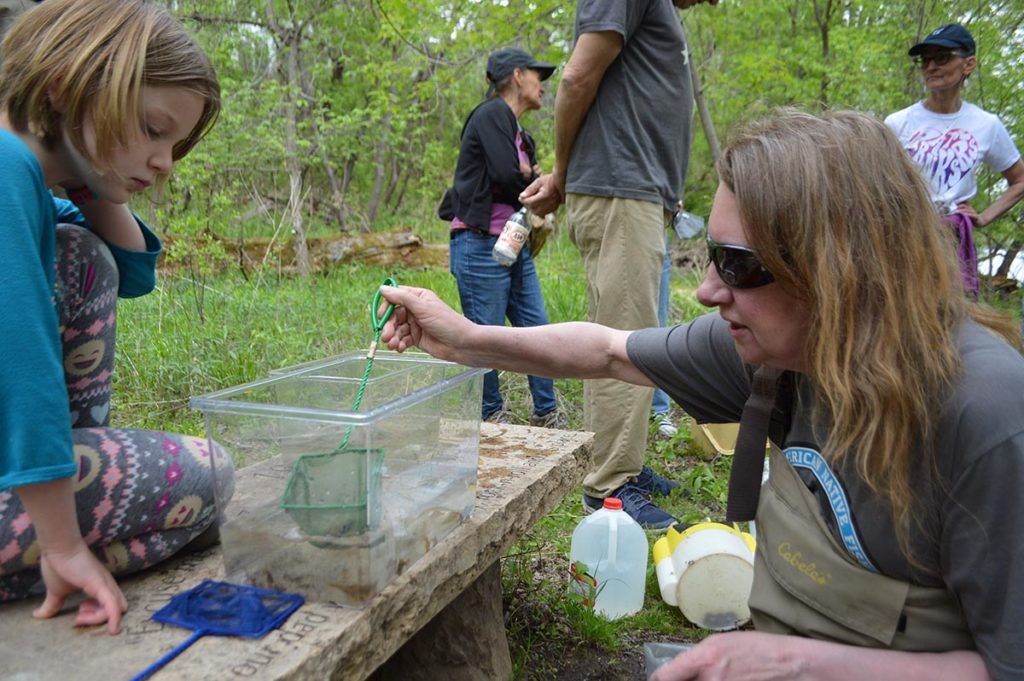
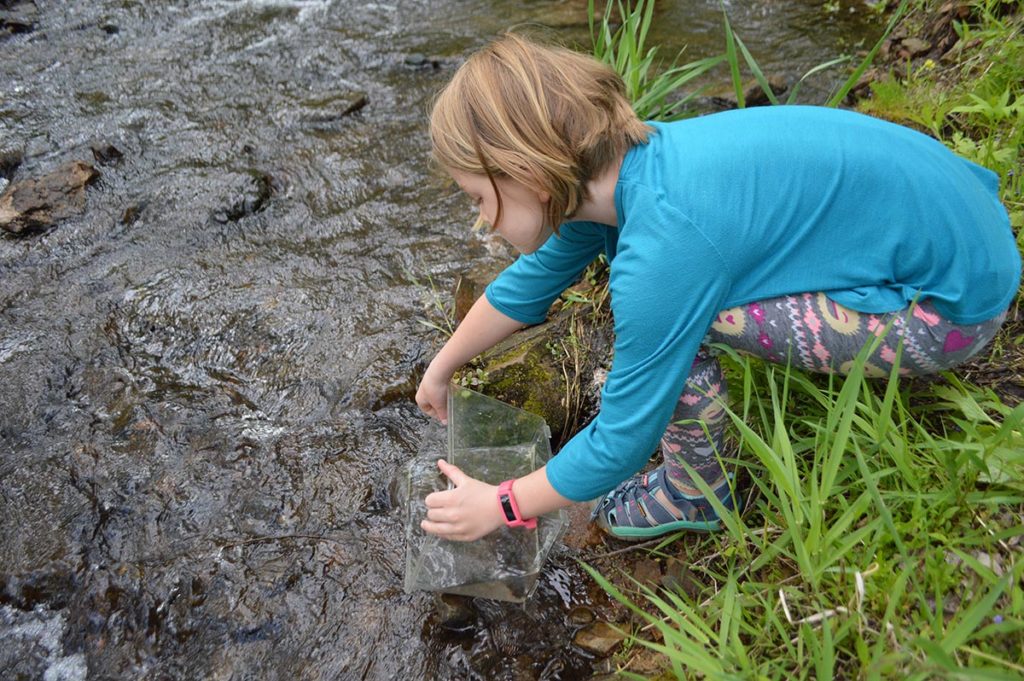
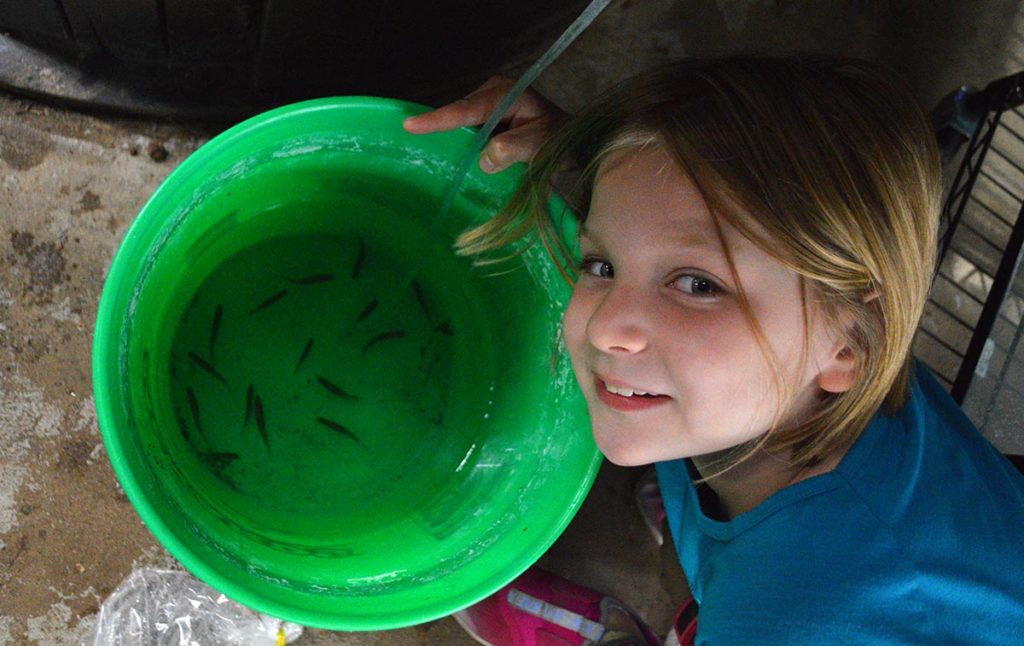
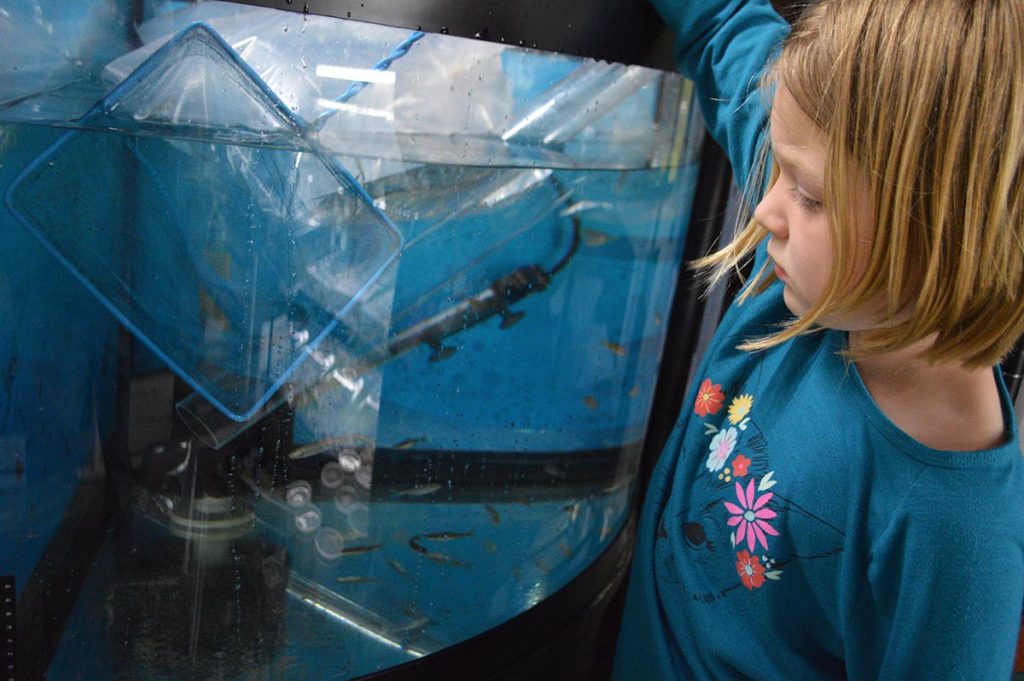
Reflecting On Time Well Spent
Ultimately, I will cherish these trips, and I’m always eager to participate in more if I can. So far I’ve only been to two of the collecting locations where Krukenberg takes people fishing. There are more rivers to see, and other species of native fish I have yet to personally see and keep. My wishlist of native species is long; I’m particularly enamored with the Fantail Darter (Etheostoma flabellare) which is anything but colorful!
My local MAS Darter Hunts will have to scratch the itch to go into the wild to collect fish for my home aquariums, at least for the foreseeable future. I don’t anticipate traveling abroad to collect fish anytime soon, but these darter hunts extend the aquarium keeping experience in a new dimension for myself and my children. Hand collection with nets is literally how some of your favorite aquarium fishes are collected in far-flung places, and participating in these fishing activities here at home may give you a deeper understanding of what goes into the collection trips we recount in the pages of AMAZONAS.
Collecting native fishes for your aquariums is also good for the soul and good for the family. Why? In the days following the darter hunt, my son repeatedly asked me to take him fishing and even spent some time practicing his fly casting skills in the front yard; I’ve never had him ask me to take him fishing before, even though he seems to enjoy it once I actually drag him along.
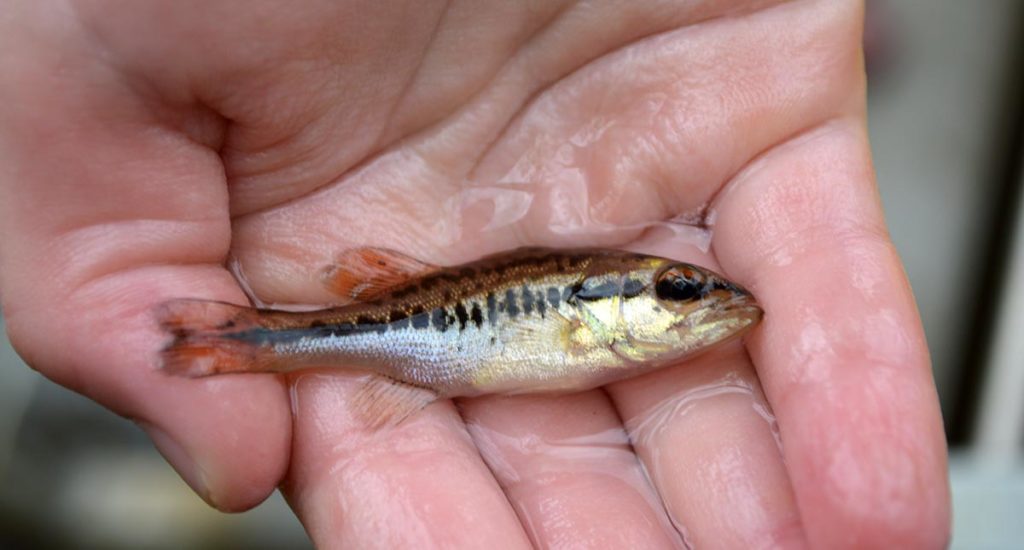
During an early hot spell last weekend, my daughter and I dug out the minnow seine that I originally purchased for use as a barrier net to self-collect marine fish in the Florida keys some 14 years ago. Having learned how to properly seine on this recent darter hunt, we tried it in the lake at Grandma & Grandpa’s house. The only thing we managed to catch (and let go) were several bluegills and some young largemouth bass that were only a couple of inches long, which my daughter really wanted to bring back to the fishroom! My daughter connected with the lake in a new way, and I got to spend some real quality time with my daughter while encouraging her interest in something that I’m also passionate about.
Learn More In A Future Issue?
As time permits, I hope to bring you a comprehensive look at the Minnesota Aquarium Society Darter Hunts in the pages of AMAZONAS.
If this story gets you excited about the possibilities of collecting and keeping your own native aquarium fishes this summer, I encourage you to:
- Join NANFA
- Connect with fellow NANFA members where you live
- Learn the local regulations governing the collection, transport, and aquarium keeping of native fish species
- Learn what local fishes may actually make good aquarium inhabitants, learn how to care for them, and learn where to find them
- Learn about your state’s angling laws as they pertain to trespassing and public access
- Talk to your local DNR about your plans so you’re on the right side of the law. Get any necessary permits.
- Gather the necessary gear and prepare your tank ahead of time
- Then get out there with your seines and dip nets and have fun!
Further Reading
Visit the NANFA website for more information on the captive husbandry of commonly-kept darter species.
The AMAZONAS Digital Edition FREE SAMPLE currently features our July/August 2019 issue, NATURALLY NATIVES! You can read all about the native fish hobby right now! This issue is also available as a printed back issue.
Currently available exclusively as a printed back issue, Ken Zeedyk shares his experiences keeping and breeding the Rainbow Darter, Etheostoma caeruleum, in the May/June 2013 issue of AMAZONAS. Order a copy today!

